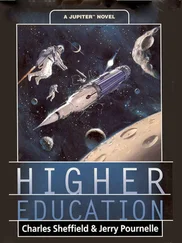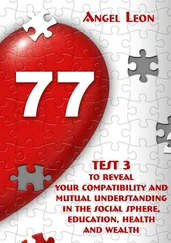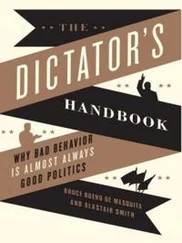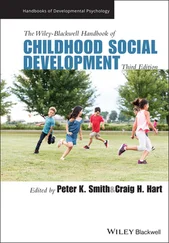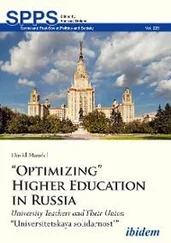Skilled workforce
Demonstrable learning outcomes in graduates
Lifelong learning attitude
Self‐awareness and improvement
Learning from experience and revisiting the goals
Competency development
If an organization or a nation has the OBE system satisfying all the above attributes, then the knowledge economy will not be very far from the SDG 4. Thus, OBE, through pragmatic examples and best practices shows how an individual or an organization can incorporate sustainability in their growth by gaining the attributes with the help of this outcome‐based mechanism.
We have presented the theoretical background, introduction, samples of case studies, and recommendation strategies to meet higher education goals under SDG 4. The concluding remarks of this chapter can be listed as:
OBE needs to be genuinely practiced by all.
The formulation of vision, mission, and goal statements should be written very carefully, taking all stakeholders into consideration.
The mapping between outcome and objectives should be performed continuously.
The goals of higher education and its sustainability should be tracked and attained in sync with SDG 4 goals.
The attainment of goals needs to be monitored and necessary feedback has to be applied so that remedial measures can help in addressing any gap.
Capacity building measures must be taken regularly with proper evaluation and monitoring.
The feedback system in the education system, especially TLP assessment, must be very strong.
Policy‐makers need to revisit the entire system of devising the policies, strategies, functions, and other operational mechanisms used in education sector.
The authors express their sincere thanks to MIIT Mandalay, Myanmar for providing an excellent ambience to practice such an OBE framework and assessment tools for SLOs in students. We also express thanks to the students and faculty members who were involved in such an impactful study, and to the organizations of all the authors for providing great support in realizing the OBE type of educational pedagogy. The experience achieved through such a framework is the main source of encouragement for writing a chapter like this which would be impossible without the participation of students and, therefore, we finally thank our respective students and their involvement in participative learning.
1 Carminati, M., Sinha, G.R., Mohdiwale, S., and Ullo, S.L. (2021). Miniaturized pervasive sensors for indoor health monitoring in Smart cities. Smart Cities. Multidisciplinary Digital Publishing Institute 4 (1): 146–155. http://doi.org/10.3390/smartcities4010008.
2 Coughlan, M. (2011). National Strategy for Higher Education to 2030. Dublin: Department of Education and Skills: https://hea.ie/assets/uploads/2017/06/National‐Strategy‐for‐Higher‐Education‐2030.pdf(accessed 24 November 2021).
3 Franco, I., Saito, O., Vaughter, P. et al. (2019). Higher education for sustainable development: actioning the global goals in policy, curriculum and practice. Sustainability Science. Springer Japan 14 (6): 1621–1642. http://doi.org/10.1007/s11625‐018‐0628‐4.
4 García Reyes, L.E. (2013). SUSTAINABLE FOUNDATIONS: A guide for teaching the sustainable development goals. Journal of Chemical Information and Modeling 53 (9): 1689–1699.
5 Hall, B. and Tandon, R. (2017). Community Based Participatory Research and Sustainable Development Goals. Ottawa, Canada. https://unescochair‐cbrsr.org/pdf/resource/BHALL_Community_Based_Research_ENG_Dec13.pdf(accessed 24 November 2021).
6 Kioupi, V. and Voulvoulis, N. (2019). Education for sustainable development: a systemic framework for connecting the SDGs to educational outcomes. Sustainability (Switzerland) 11 (21): http://doi.org/10.3390/su11216104.
7 Leal Filho, W., Shiel, C., Whereat, N. et al. (2019). Sustainable Development Goals and sustainability teaching at universities: Falling behind or getting ahead of the pack. Journal of Cleaner Production 232: 285–294. https://doi.org/10.1016/j.jclepro.2019.05.309.
8 Marshall, H. and Oxfam Education (2019). The Sustainable Development Goals: A Guide for Teachers. 32. https://oxfamilibrary.openrepository.com/bitstream/handle/10546/620842/edu‐sustainable‐development‐guide‐15072019‐en.pdf?sequence=1&isAllowed=y(accessed 24 November 2021).
9 McKeown, R. (2006). Education for Sustainable Development Toolkit Version 2. UNESCO, (503), 1–142. https://unesdoc.unesco.org/ark:/48223/pf0000152453(accessed 24 November 2021).
10 Pizarro Milian, R. and Davies, S. (2020). Inequality in higher education. The International Encyclopedia of Higher Education Systems and Institutions. 1699–1705. http://dx.doi.org/10.1007/978‐94‐017‐8905‐9_41.
11 Pritchett, L. (2015). Creating education systems coherent for learning outcomes: Making the i(December). Working paper. Research on Improving Systems of Education (RISE). https://riseprogramme.org/sites/default/files/2020‐11/RISE_WP‐005_Pritchett.pdf(accessed 24 November 2021).
12 Rieckmann, M. Mindt, L., and Gardiner, S. (2017). Education for Sustainable Development Goals Learning Objectives. UNESCO.
13 Sinha, G.R. (2021). Assessment Tools for Mapping Learning Outcomes With Learning Objectives. IGI Global.
14 Swaminathan, M.S. and Kesavan, P.C. (2016). Achieving the sustainable development goals. Current Science 110 (2): 127–128. http://doi.org/10.2307/j.ctv1gwqmr4.10.
15 TWI2050 – The World in 2050 (2018). Transformations to achieve the Sustainable Development Goals – Report prepared by The World in 2050 initiative, International Institute for Applied Systems Analysis. http://dx.doi.org/10.22022/TNT/07‐2018.15347.
16 Ullo, S.L. and Sinha, G.R. (2021). Advances in IoT and smart sensors for remote sensing and agriculture applications. Remote Sensing. Multidisciplinary Digital Publishing Institute 13 (13): 2585. http://doi.org/10.3390/rs13132585.
17 UN and Australian Government (2018). Report On The Implementation Of The Sustainable Development Goals 2018. www.dfat.gov.au/sites/default/files/sdg‐voluntary‐national‐review.pdf(accessed 24 November 2021).
18 UNESCO (2016). Unpacking sustainable development goal 4: education 2030; guide – UNESCO Biblioteca digital. Environmental Education Research 4 (7): 1–32. https://www.campaignforeducation.org/docs/post2015/SDG4.pdf.
19 UNESCO (2019). Discussion on SDG 4 – Quality education. High‐level Political Forum on Sustainable Development. 14. https://sustainabledevelopment.un.org/content/documents/23669BN_SDG4.pdf(accessed 24 November 2021).
20 UNICEF (2019). Every Child Learns: UNICEF Education Strategy 2019–2030. Unicef. https://www.unicef.org/media/59856/file/UNICEF‐education‐strategy‐2019‐2030.pdf(accessed 24 November 2021).
21 United Nations (2015). World Trends in Education for Sustainable Development. http://doi.org/10.3726/978‐3‐653‐04538‐3
22 United Nations Development Programme (2017). SDG accelerator and bottleneck assessment. 1–72. https://www.undp.org/content/dam/undp/library/SDGs/English/SDG_Accelerator_and_Bottleneck_Assessment_Tool.pdf(accessed 24 November 2021).
23 van't Land, H. and Herzog, F. (2017). Higher education paving the way to sustainable development: Aglobal perspective. 28. Paris: International Association of Universities. https://www.iau‐aiu.net/IMG/pdf/higher‐education‐paving‐the‐way‐to‐sd‐iau‐2017.pdf(accessed 24 November 2021).
24 Wright, T. (2014). Education for sustainable development. In: Encyclopedia of Quality of Life and Well‐Being Research, 1814–1816. http://doi.org/10.1007/978‐94‐007‐0753‐5_839.
4 Transforming Ourselves to Transform Societies: Cultivating Virtue in Higher Education for Sustainability
Читать дальше

